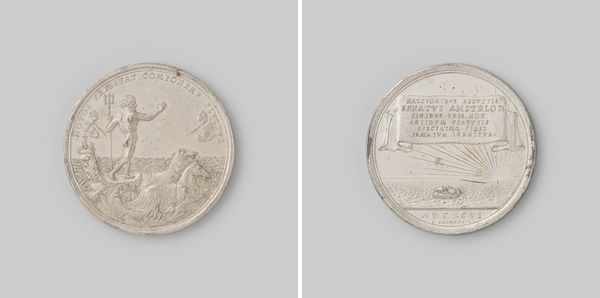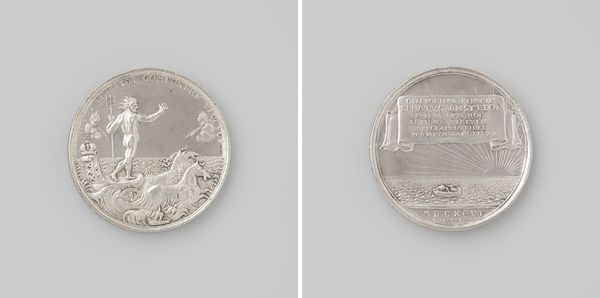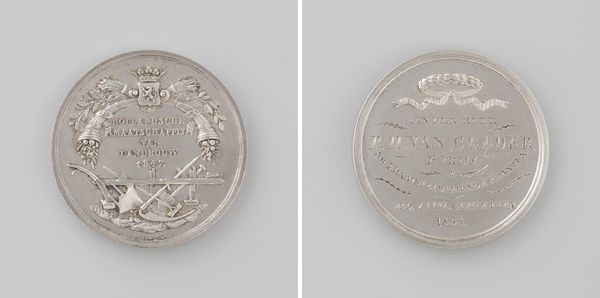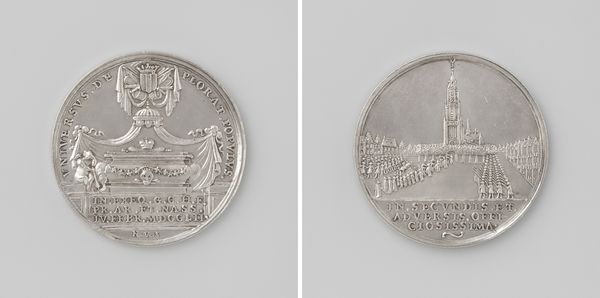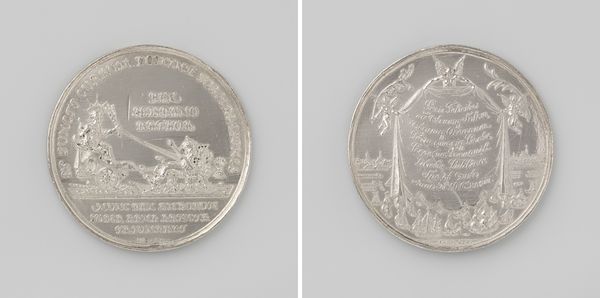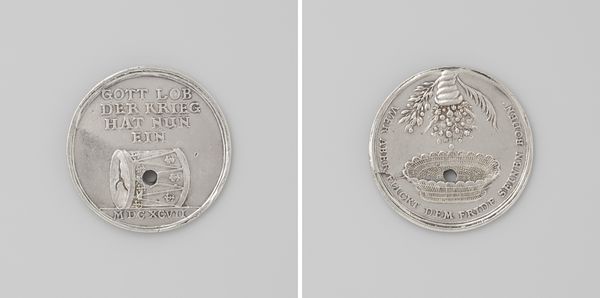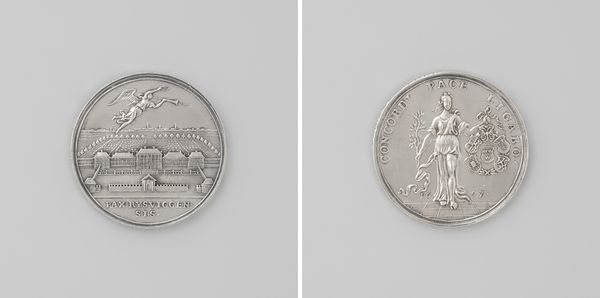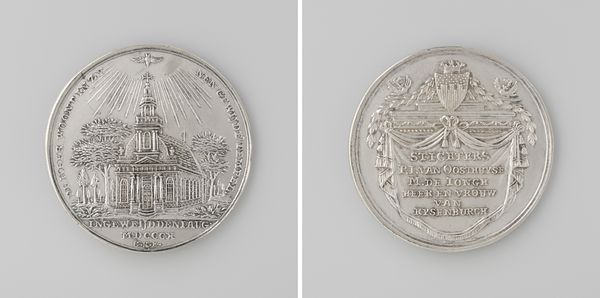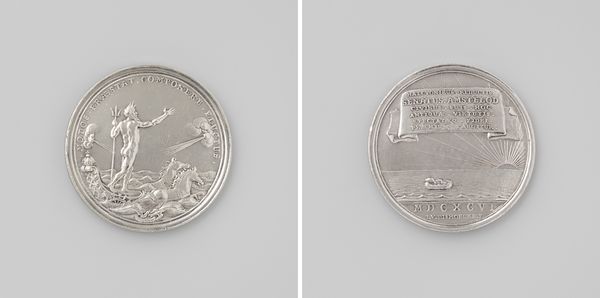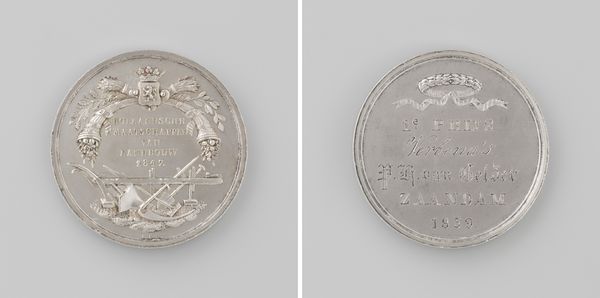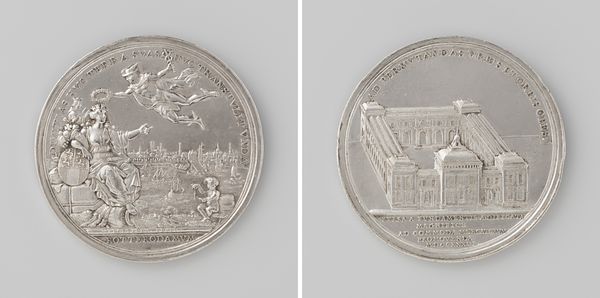
Op de demping van het aansprekersoproer te Amsterdam naar aanleiding van de keur op het begraven 1696
0:00
0:00
#
product photograph merchandise
#
masculine design
#
natural stone pattern
#
decorative element
#
fashion mockup
#
product fashion photography
#
historical fashion
#
product design photgrpaphy
#
clothing photo
#
retail photography
Copyright: Rijks Museum: Open Domain
Curator: Today we are looking at “Op de demping van het aansprekersoproer te Amsterdam naar aanleiding van de keur op het begraven,” crafted in 1696 by Jacob van Dishoecke. Editor: My initial reaction is one of coolness and distance. The stark silver disc feels clinical, almost like a futuristic token instead of something from the late 17th century. Curator: Interesting observation. Let’s break down the composition. We see two sides: one depicts Neptune, the Roman god of the sea, with his trident and chariot, seemingly pacifying turbulent waters. Editor: And those churning waters symbolize social unrest, right? This piece memorializes the suppression of the aansprekersoproer—the "announcers' riot"— triggered by regulations imposed on funeral practices in Amsterdam. Who had the right to grieve, and how, was clearly a flashpoint. Curator: Precisely. Dishoecke employs allegory here. Note the strong diagonal created by Neptune’s stance and the waves; it's very dynamic, guiding the eye through the chaos to a point of…resolution. The lettering around the edge seems strategically balanced too. Editor: Balance achieved through repression, wouldn’t you say? Turning to the other side, a tranquil seascape unfolds with a Latin inscription. This, juxtaposed with the preceding scene of Neptune subduing what's read as rebellion. Tell me more about that message. Curator: Yes, it's inscribed “MALOTONIUS VEI REDVCTIS / SENATVS AMSTELOD / CLIVIBVS IVSSIT HOC / ARTIVM VIRTVTI / SPECTATO FINEM / PRAEMIUM LARGITVA.” Its glorifying the Amsterdam Senate and framing their actions regarding funeral regulations as virtuous and necessary. The reward for art. Editor: Right, because who controls the narrative controls the way history is interpreted. This medallion reveals not just an event, but the power dynamics shaping collective memory in 17th century Amsterdam. The artistic merits of this...artefact as a tool of authority cannot be overstated. Curator: And from a formal perspective, considering the artist's control of space and symbol…it’s a demonstration of masterful die-making. Thank you for elucidating its intersectional narrative. Editor: Of course. Art’s meaning truly resides in how its form is tethered to, and informs the political milieu. Always important to look closely and with eyes attuned to history.
Comments
No comments
Be the first to comment and join the conversation on the ultimate creative platform.
